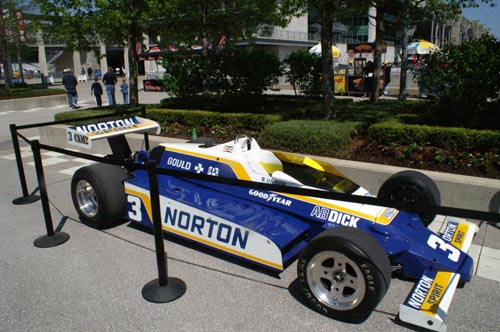The Indianapolis Motor Speedway was originally constructed as a testing facility for the burgeoning American automobile industry, so when Dallara was selected to continue building the 2012 IZOD IndyCar Series chassis, it was only natural for the Italian company to return to Speedway, Ind.
On Tuesday, Dallara broke ground on their first facility outside of Italy, just blocks from the Indianapolis Motor Speedway. The factory, located on Main Street in Speedway, will allow the 2012 safety cell to be developed, tested and produced in Indianapolis.
Gian Paolo Dallara, founder of Dallara Autombili, said of the building:
"Our design for the 2012 IndyCar Series safety cell is innovative, green, cost effective and faster than ever before. The safety cell will be designed in Italy meanwhile the development, the tests and the production will be done right here in the heart of Speedway, the home open wheel racing. Our continual engineering evaluation of the chassis will take place in Speedway. We are excited to become an integral part of this community that is so steeped in racing tradition and motorsports advancements."
The 100,000 square foot building, which will be built following the demolition of the factory on its current site, will allow fans passing by to gain glimpses of the production process through several windows and will house a restaurant and museum.
While Dallara plans on using about sixty percent of the building, the Indy Racing Experience (which provides thrills like this) will also move into the building.
Speedway Redevelopment Commission officials are confident that Dallara's commitment to Speedway and open-wheel racing will be the green flag on development in Speedway. Already, IZOD IndyCar Series CEO Randy Bernard feels that Dallara's move to Speedway further positions the town and open-wheel racing series on solid footing:
"As this new Dallara facility positions Speedway for future growth, the cost-effective package that will be produced here will also position the series for growth, and will foster the tradition of innovation in open-wheel racing and the Town of Speedway"
Dallara and the IZOD IndyCar Series intend to have testing of the 2012 chassis begun by June 2011, including the aero kit that Dallara will also produce to fit the safety cell.




